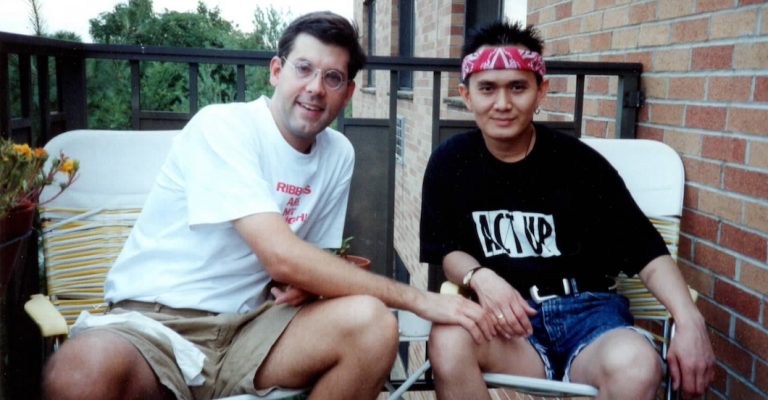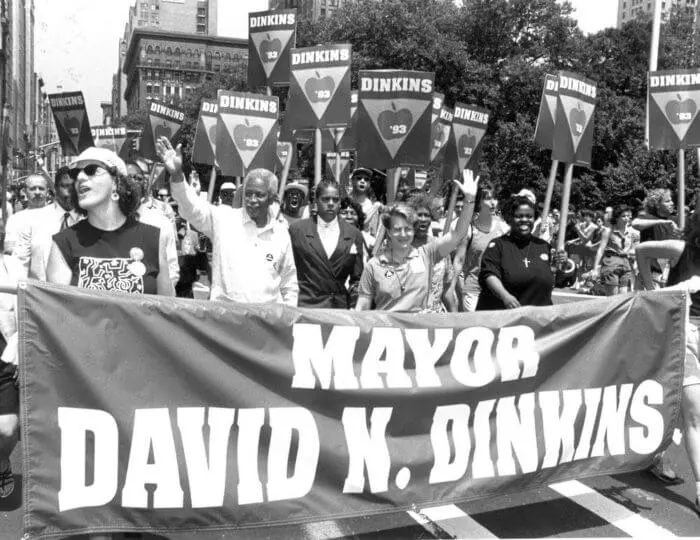
On March 1, 1993, New York City took a bold step, launching a registry that recognized unmarried couples—laying the groundwork for marriage equality and reshaping the city’s approach to civil rights.
New York, N.Y. — The morning of March 1, 1993, was brisk, but the energy outside New York City Hall was unmistakably warm.
Couples—some nervous, some jubilant—lined up for a chance to be counted, to have their relationships recognized by the city for the first time. My then-partner and I were among them, becoming couple ‘number 73,’ part of a historic moment that would ripple through decades of advocacy and change.
The Dinkins Era: A New Chapter for New York

It was under Mayor David Dinkins that New York City’s Domestic Partnership registry was born.
Through two executive orders, Dinkins created a system that allowed unmarried couples—regardless of gender—to register their partnerships with the city.
This registry extended new rights to city employees and residents, including hospital visitation, bereavement leave, and health benefits for city employees and their partners.
The registry was more than a bureaucratic innovation; it was a public declaration that all families deserved recognition.
The phrase “Many Families, All Valued” became a quiet rallying cry, signaling a shift in how the city viewed love, partnership, and equality.

What Domestic Partnership Meant in 1993
The Domestic Partnership registry was a patchwork of progress.
It offered a handful of legal protections and benefits, but fell short of full equality. Registered couples could:
- Visit each other in city hospitals and correctional facilities
- Access bereavement and child care leave for city employees
- Qualify for health benefits if one partner was a city employee
- Establish evidence for succession to tenancy rights in city housing
Yet, these rights were inconsistently applied and did not match the full spectrum of protections that marriage provided.
Still, for many LGBTQ+ New Yorkers, it was the first time their relationships were recognized by any government body.
Expanding Rights: From Registry to Legislation

The progress initiated by Dinkins did not end with his administration.
In 1997, Mayor Rudolph Giuliani signed legislation that codified and expanded the rights of domestic partners, making New York City a national leader in LGBTQ+ rights.
The City Council’s decisive vote marked the first significant piece of pro-gay legislation in the city in over a decade.
By 1998, more than 8,700 couples had registered as domestic partners in New York City.
Notably, over 55% of those couples were heterosexual, reflecting the registry’s broad appeal and inclusive intent.
Personal Stories: Love, Loss, and Legal Recognition

For those in line that morning, the registry was deeply personal.
Some couples had been together for decades, weathering discrimination and invisibility.
Others like my partner and I were just starting their lives together, eager for the small but meaningful protections the registry would provide.
I had agreed to be his partner on Valentines Day, a month after we began dating, and two weeks later with the legalization of Domestic Partnership we tied the legal knot.
The ability to make medical decisions for a partner or to grieve openly at a funeral was not just a legal right, but a validation of their relationship’s legitimacy.
The registry fostered a sense of community and hope, even as it highlighted the work still to be done.

Legacy and Ongoing Challenges
While the Domestic Partnership registry was a watershed moment, it was not the end of the story.
The rights it conferred were limited and inconsistently applied, especially outside city employment.
Many couples continued to face discrimination in housing, employment, and healthcare. Yet, the registry set a precedent.
It demonstrated that change was possible and that public policy could evolve to reflect the realities of modern families.
It also inspired similar efforts in other cities and states, contributing to a national movement for equality.
Looking Forward: The Work Continues
Today, marriage equality is the law in New York and across the U.S., but the fight for full equality continues. Issues like parental rights, transgender rights, and protections against discrimination remain at the forefront. The legacy of March 1, 1993, is a reminder that progress is often incremental, built on the courage of those willing to stand in line for change.
Summary for Audio File (75 words)
On March 1, 1993, couples gathered at New York City Hall to register as Domestic Partners, marking a historic step for LGBTQ+ rights. Under Mayor David Dinkins, the city recognized unmarried couples for the first time, paving the way for marriage equality decades later. This feature explores the personal stories, policy changes, and ongoing challenges that began with that momentous day, highlighting the journey from domestic partnership to marriage equality in New York.
#LGBTQHistory #MarriageEquality #NYCDomesticPartnership #LoveIsLove
#EqualityForAll #NYCHistory #CivilRights #Pride #HumanRights #Progress
TAGS: domestic partnership, New York City, LGBTQ rights, marriage equality,
David Dinkins, Andrew Cuomo, civil rights, legal recognition, City Hall, human rights
